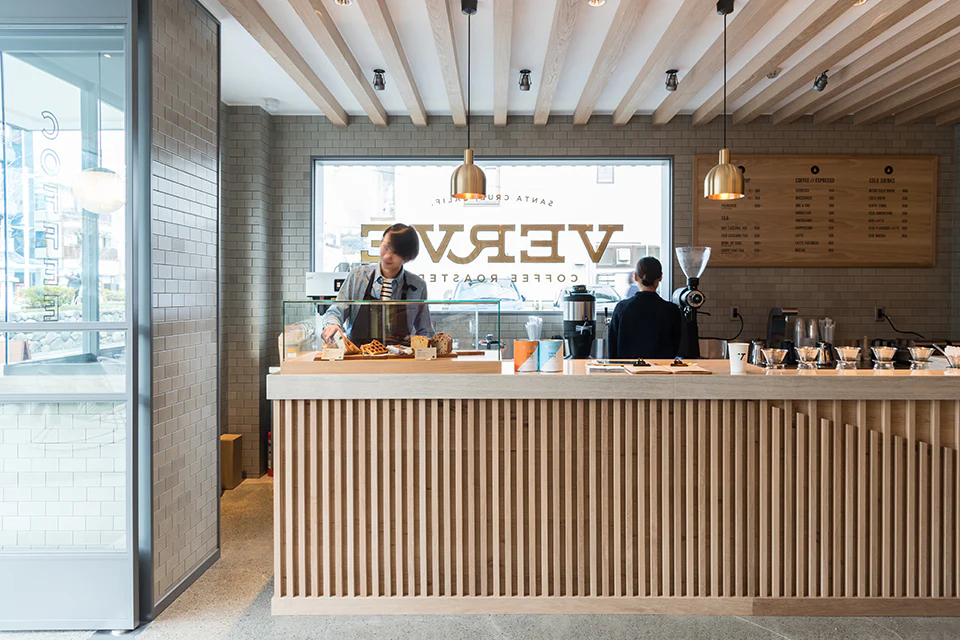Have you ever wondered how some coffee shops thrive while others struggle to break even? Running a successful café is more than just serving great coffee—it requires strategic planning, customer engagement, and smart financial management. From building a strong brand identity to leveraging digital tools, optimizing operations, and diversifying revenue streams, there are countless ways to maximize your café’s profitability.
In this playbook, we’ll explore proven strategies that coffee shop owners can implement to maximize their profits and build a sustainable business. Along the way, we’ll highlight real-world success stories to illustrate how these strategies work in practice.
1. Building a Strong Brand Identity

A well-established brand sets your coffee shop apart from competitors. Creating a unique ambiance, having a signature drink, and crafting a compelling story can make a big difference. Branding extends beyond your logo and colors—it’s about the entire experience you create for customers.
Develop a Unique Selling Proposition (USP)
Identify what makes your café different. Is it your ethically sourced coffee, a one-of-a-kind brewing method, or a cozy community atmosphere?
Example: Blue Bottle Coffee started as a small roastery with a mission to serve fresh, high-quality coffee. Their commitment to quality and consistency turned them into a global brand with a cult-like following. By focusing on freshness (no pre-ground beans), they created a unique niche in the market.

Signature Menu Items
Creating a specialty drink exclusive to your café can set you apart and encourage customer loyalty.
Example: Philz Coffee became famous for their Mint Mojito Iced Coffee, a drink that customers can’t find anywhere else. This differentiation has helped drive their rapid expansion.

2. Increasing Revenue Through Diversification
Relying solely on coffee sales can be limiting. Expanding your revenue streams can make your business more resilient. Here’s how to generate additional income beyond daily coffee sales.
Sell Branded Merchandise
Selling branded mugs, T-shirts, or tote bags can enhance brand recognition and create additional income.
Example: Starbucks generates billions in revenue not just from coffee but also from their branded merchandise and seasonal products. Their limited-edition holiday cups and tumblers create buzz and drive extra sales.
Offer Subscription Services
A subscription model, such as delivering fresh coffee beans to customers’ homes, can provide a steady income stream. Monthly coffee subscriptions keep customers engaged and ensure recurring revenue.
Example: Trade Coffee curates personalized coffee subscriptions, ensuring repeat customers and predictable revenue. Small roasters benefit from this model, gaining exposure to a broader audience.
Host Special Events
Organizing events like coffee-tasting sessions, live music nights, or barista workshops can increase foot traffic and boost sales.
Example: Verve Coffee Roasters frequently hosts educational coffee events, drawing in both loyal customers and new visitors. Their latte art competitions and coffee education sessions help build a strong coffee community around their brand.

3. Implementing a Customer Loyalty Program
Customer retention is essential for long-term success. A well-structured loyalty program encourages repeat visits and enhances customer satisfaction. Repeat customers tend to spend more and refer others.
Use Digital Loyalty Programs
Paper punch cards are outdated—customers now prefer digital programs that are easy to track and redeem.
Example: GAWAPP APP makes it easy for customers to earn and redeem rewards while allowing businesses to track purchasing behaviors. With app-based loyalty programs, customers receive personalized offers and reminders, increasing retention.
Tiered Reward Systems
Offering multiple levels of rewards encourages customers to spend more to reach the next level.
Example: Dunkin’s DD Perks rewards program has successfully increased customer engagement, driving more frequent visits and boosting revenue. Customers earn points per dollar spent and get free drinks as they accumulate more.

4. Optimizing Operational Costs
Cutting unnecessary expenses while maintaining quality is crucial for profitability. Reducing waste and improving efficiency can help boost your bottom line without sacrificing customer experience.
Reduce Waste
Implement inventory tracking to minimize ingredient waste and avoid over-purchasing.
Example: Stumptown Coffee Roasters optimized their supply chain by implementing an efficient inventory management system, reducing waste and improving margins. By monitoring demand trends, they ensure fresh products without excess stock.
Invest in Energy-Efficient Equipment
Upgrading to energy-efficient espresso machines and LED lighting can lower operational costs.
Example: Many independent coffee shops in Europe have switched to eco-friendly appliances, reducing their electricity bills while promoting sustainability. Investing in smart refrigeration and energy-efficient grinders can lead to significant long-term savings.
Automate Where Possible
Using POS systems with automated reporting and scheduling software can reduce labor costs and improve efficiency.
Example: Many modern coffee shops use Square or Toast POS systems to track peak hours, optimize staffing, and reduce labor costs. Automation also improves order accuracy and speeds up service.
5. Leveraging Social Media & Community Engagement
Your online presence is just as important as your physical store. Engaging with customers through social media can drive brand awareness and sales. Community involvement builds brand loyalty and fosters meaningful relationships with customers.
Encourage User-Generated Content
Ask customers to share photos of their coffee experiences with a branded hashtag.
Example: Alfred Coffee in Los Angeles gained massive popularity through Instagram-worthy aesthetics and strong social media engagement. Their minimalist, stylish cafés and branded cups became iconic online.
Partner with Local Businesses
Collaborating with nearby bakeries or artists can create a win-win situation.
Example: Many independent coffee shops partner with local pastry chefs to offer unique baked goods that aren’t available elsewhere, attracting more customers. Some cafés also collaborate with local artists, displaying their artwork and creating a unique atmosphere.
Utilize Influencer Marketing
Working with local influencers can help generate buzz and attract new customers.
Example: Small coffee brands often send free drinks or merchandise to local food bloggers, who then post about them on social media. This kind of organic marketing can bring in a wave of new customers with minimal investment.
Conclusion
Maximizing café profits requires a combination of branding, diversification, smart cost management, and customer engagement. By implementing strategies used by successful coffee businesses, you can unlock your café’s full potential and build a thriving, profitable establishment.
Start applying these insights today—whether it’s launching a signature drink, setting up a subscription service, or optimizing operational costs—and watch your coffee shop flourish!




